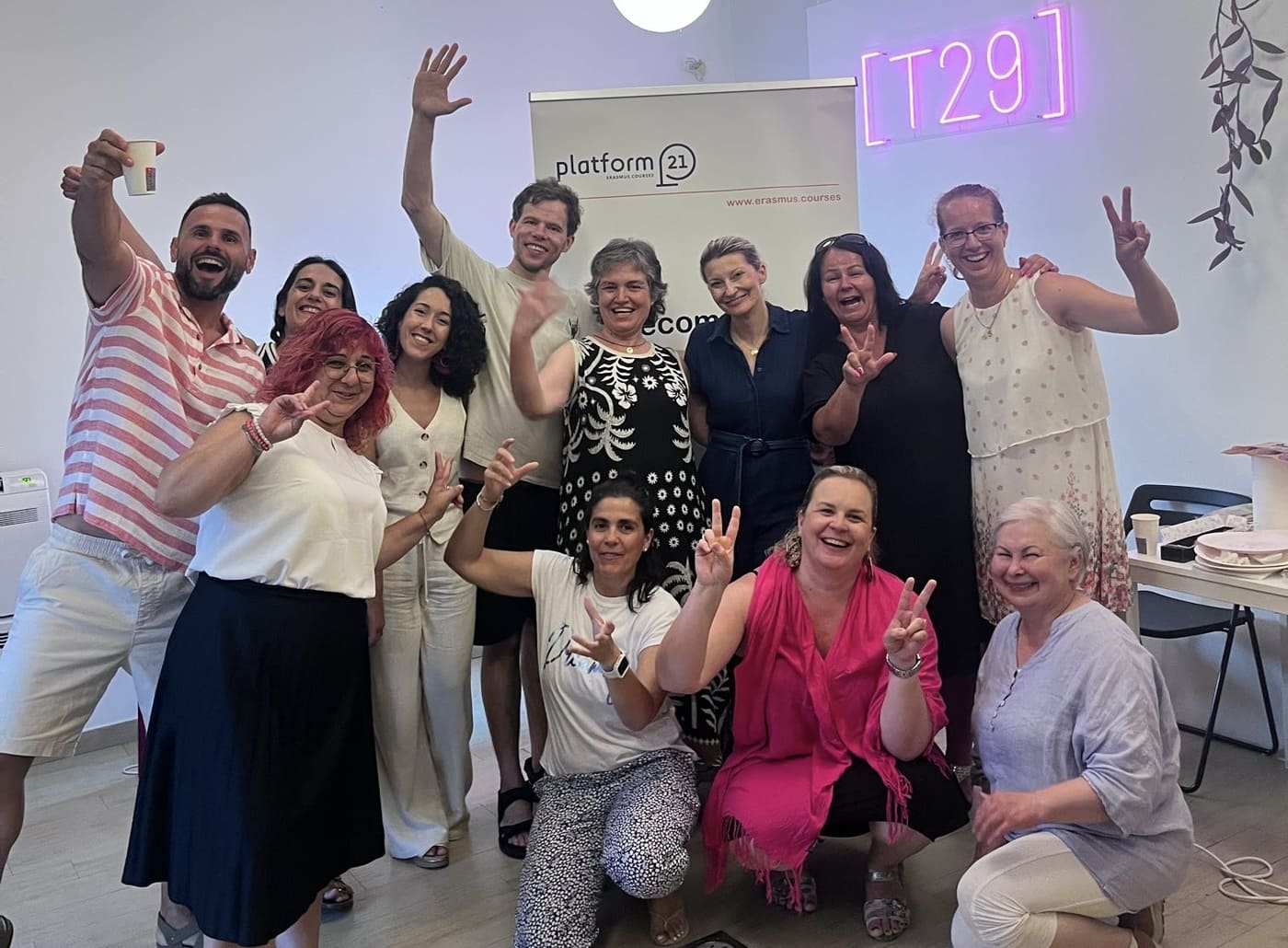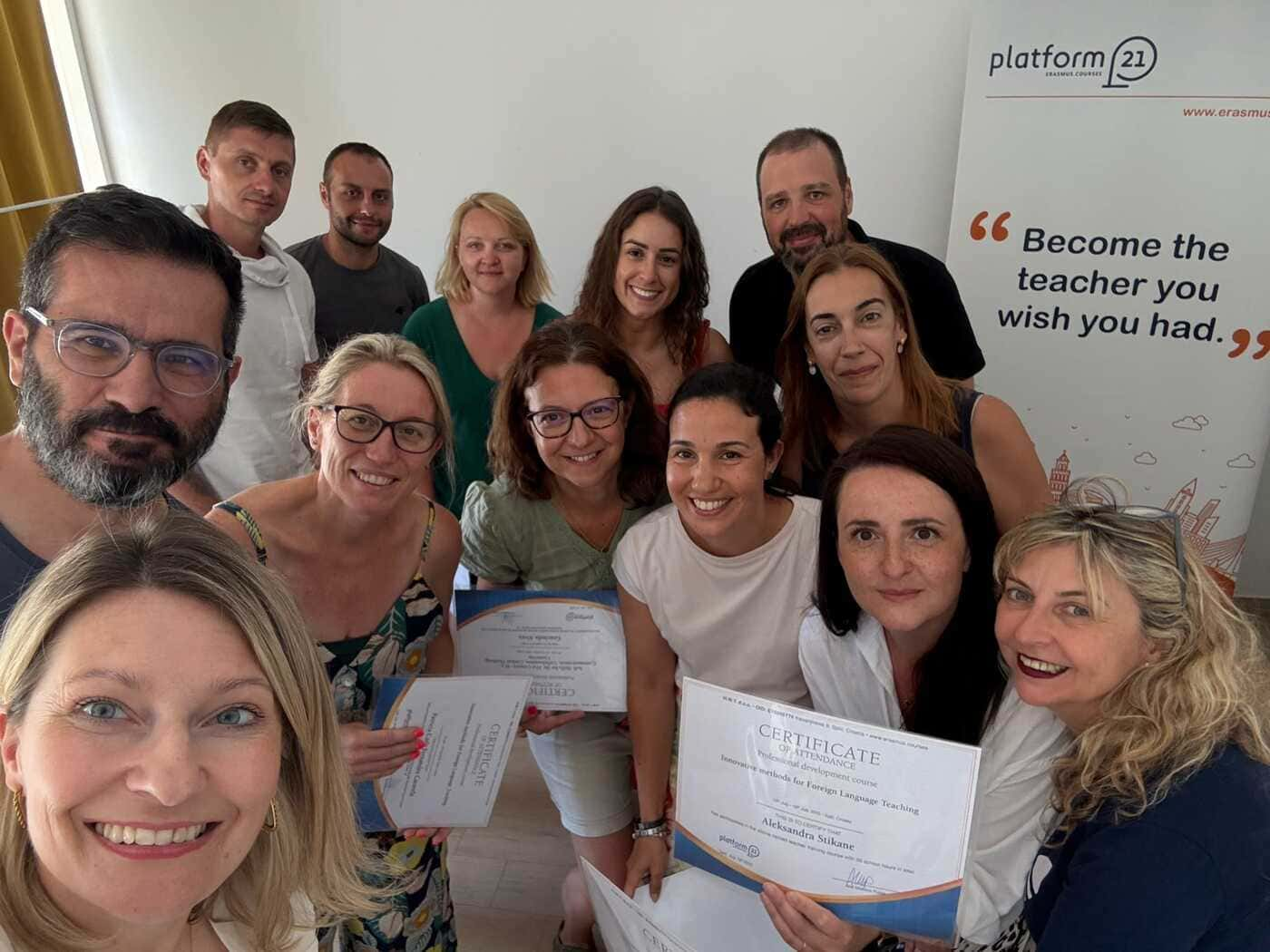How to write a successful Erasmus+ project proposal (KA121/KA122)

Let’s start with the basics. A lot of organisations wish to apply for Erasmus projects, but don’t know much about it. KA1 (Key action 1) vs KA2 (Key action 2) – what’s the difference?
Eva:
- KA120 is Accreditation (long-term). If your organisation is accredited, you annually request funding (the “KA121 application”) aligned with your accreditation plan. Accreditation doesn’t guarantee money; it enables you to apply each year within the 2021–2027 cycle. Next programme period starts in 2028 and will last until 2034.
- KA122 is for short-term projects (great for newcomers). If you’re starting out or prefer a smaller, time-bound project with fewer mobilities and simpler goals, KA122 is often the better first step.
Is it hard to get Erasmus+ project approved right now?
Carmen:
It depends by country. In some countries across Europe, competition for school education is very high. Projects that succeed typically score very well, so clarity and internal consistency really matter.
What’s the most common mistake you see in Erasmus+ Project Applications?
Vesna:
Treating the form as isolated sections written by different people. Evaluators look for a single, coherent logic, so be careful about the structure. Before anything else, answer the following questions related with:
- Needs & challenges – what’s happening now, mention real evidence
- Goals – directly derived from those needs
- Activities – to achieve the goals
- Results – tangible outputs/outcomes
- Evaluation & impact – how you’ll measure success, both qualitative and quantitative
When any link in that chain is weak, the proposal loses power.
Schools often struggle with writing the “impact” and “evaluation” parts of their Erasmus+ Project application. Tips?
Carmen:
First, write goals that are measurable. Then define indicators (quality and quantity) and data sources. For example:
- Goal: Improve teachers’ CLIL practice.
- Indicators: 6 lesson observations per term; rubric scores; teacher self-assessments; student work samples; pre/post surveys.
- Target: +20% average improvement against rubric by Term 3.
This makes evaluation feasible and credible.
How many goals should a school set?
Eva:
Keep it proportional to your school’s size and capacity. My school is quite small. We have 16 teachers and just over 100 students; we set two focused goals and scored very well. More goals are not better, instead – achievable and coherent is best.
What about the number of mobilities?
Vesna:
Mobilities are a means, not a goal itself. Ask: “How many mobilities do we need to achieve these goals and transfer learning to colleagues and students?” For a staff of about 25, sending 21 on job shadowing in one shot is usually too much. Plan for learning, then transferring knowledge, and implementation, then expand.
Any advice before schools even start writing?
Carmen:
- Start with needs. Choose the ones where internationalisation is genuinely relevant.
- Set a realistic number of goals. Keep the plan simple and proportional.
- Build on what exists. Show how Erasmus+ will deepen or extend ongoing work, not create a disconnected initiative.
Why should schools embrace Erasmus+ despite the paperwork?
Actionable Top 10 Checklist: Make Your Erasmus+ Proposal Strong
- Evidence your needs. Collect baseline data such as surveys, achievements and attendance records, classroom observations, audits, and feedback. Use this evidence to show what is happening now.
- Derive goals from your needs. Set a reachable number of goals. Make them specific, measurable, and time-bound so you can track progress.
- Choose the right action. If you are new to Erasmus+, consider KA122 for a short-term project. If you have a long-term plan and stronger capacity, consider KA120 accreditation.
- Design coherent activities. Plan job shadowing, courses, and student mobilities that clearly connect to each goal. Invite an expert to your school to train more staff members at the same time. Every activity should help you reach a goal.
- Plan for transfer. After each mobility, schedule sharing sessions, open lessons, peer coaching, and the creation of resources so learning spreads across the school.
- Define indicators early. Decide what you will measure, how often you will measure it, which tools you will use, and who is responsible for collecting the data.
- Describe impact at three levels. Explain the expected impact on teachers (classroom practice), students (learning and engagement), and the organisation (policies and culture).
- Show sustainability. Describe how results will last over time through policies, curriculum updates, and regular yearly routines.
- Communicate and disseminate. Plan how you will share results: website updates, staff meetings, parent newsletters, social media, local media, and teacher networks.
- Ensure proportionality. Match your goals, number of mobilities, budget, and timeline to your school’s size and capacity.
Common Mistakes (and How to Fix Them)
Mistake No 1: Writing sections in isolation.
Fix: Create a one-page logic model that links needs → goals → activities → results → evaluation, and share it with the whole team before writing.
Mistake No 2: Vague goals (e.g., “improve digital skills”).
Fix: Make goals measurable, for example: “By June, 80% of teachers will use two AI-supported formative assessment strategies, shown in lesson plans and student feedback.”
Mistake No 3: Mobilities without transfer.
Fix: Require post-mobility deliverables such as demo lessons, department workshops, micro-credentials, or resource packs.
Mistake No 4: Thin evaluation.
Fix: Combine quantitative data (rubric scores, counts, rates) and qualitative data (observations, interviews) with clear timelines and named responsibilities.
Mini-Glossary
- Erasmus+ KA120 (Accreditation): A long-term framework that lets accredited organisations request annual mobility funding linked to a multi-year plan.
- Erasmus+ KA122 (Short-Term Projects): Short, time-limited projects that are ideal for newcomers or smaller goals.
- Mobility: A learning or training visit, such as job shadowing, a course, or a student exchange—that supports your project goals.
- Impact: The positive change your project creates in teaching, learning, and the organisation, supported by evidence.
- Indicators: The specific things you measure to judge progress and success.
Final Word from Carmen
“Keep it simple, proportional, and connected. Start with your real needs, set a manageable number of goals, and make every activity serve those goals. When schools do this, the results are powerful, for teachers, students, and the whole community.”
Special thanks to people behind this story
We would like to give special thanks to Carmen, Vesna and Eva for being part of this blog. Thanks to their observations, insights, and experience on Erasmus+ projects, we were able to bring an authentic view on the topic and share it with you.
Content
- Let’s start with the basics.
- Is it hard to get Erasmus+ project approved right now?
- What’s the most common mistake you see in Erasmus+ Project Applications?
- Schools often struggle with writing the “impact” and “evaluation” parts of their Erasmus+ Project application. Tips?
- How many goals should a school set?
- What about the number of mobilities?
- Any advice before schools even start writing?
- Why should schools embrace Erasmus+ despite the paperwork?
- Actionable Top 10 Checklist: Make Your Erasmus+ Proposal Strong
- Common Mistakes (and How to Fix Them)
- Mini-Glossary
Tags
You may also like:

Erasmus+ 2026 Programme Guide: Key Changes, KA1 & KA2 Deadlines

Inside Iceland’s Education System: Trust, Nature, Clarity

Erasmus+ Programme 2028 – 2034 proposal: What to expect

A teacher training course in Iceland: A week to remember in Reykjavik

Erasmus+ Teacher Training Mobility with Platform21- Top 5 Reasons Why Croatia Is a Hidden Gem


